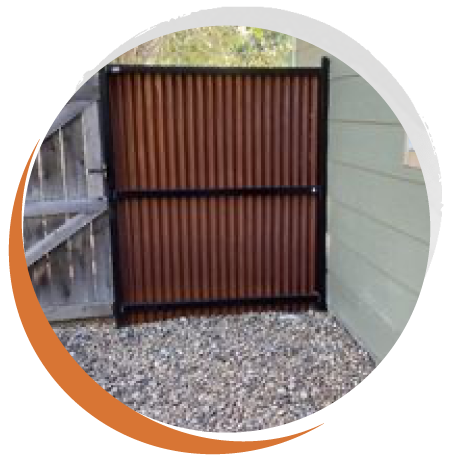FENCES ARE FUSES
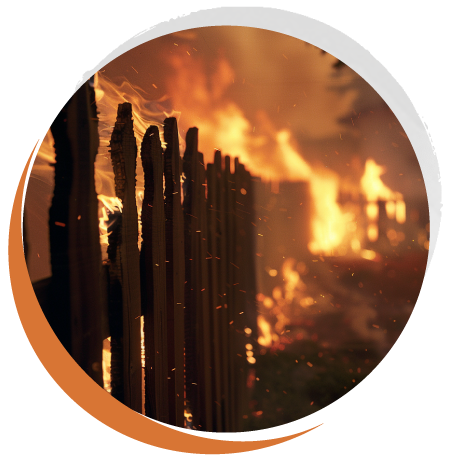
Combustible fencing often contributes to home loss during a wildfire.
Once the fence catches fire:
- Radiant heat from the burning fence cause the house siding to ignite or windows to fail bringing flame in direct contact with the home.
- The burning fence generates embers and larger fire-brands that get blown against the home and lead to ignition.
- The fence acts as a fuse, drawing fire into direct contact with the home.
There are several strategies that can help mitigate the risk of having a wood fence.
Each fencing material should have a fire rating. The rating is determined by measuring flame spread in a standardized (ASTM E84) test.
These ratings can be helpful when discussing various fencing materials with a building contractor or building materials supplier.
The lower the number, the less combustible the material will be.
Class A = 0-25 ASTM rating
Class B = 26-75
Class C = 76-200
Your fence might not touch your own home, but may still be posing a threat to your neighbor’s home or to outbuildings on either property.
Class A Fencing includes materials like masonry, stone, iron, brick, rock, and steel-on-steel.
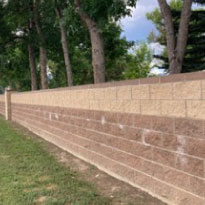
Masonry
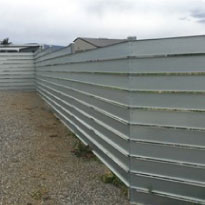
Metal

Steel
Class B Fencing includes materials like vinyl, hard plastic, and steel siding on wood framing.

Composite
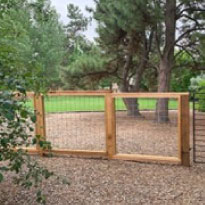
Steel and Wood
Work with what you have:
If you can’t afford to change out the entire fence, start by retrofitting each section that touches your home for at least 5 feet.
Maintain a clean non-combustible surface along the length of your fence, and work with your neighbors if possible so that both sides of the fence are free of kindling fuels like dry weeds, leaves, and debris against wood.

